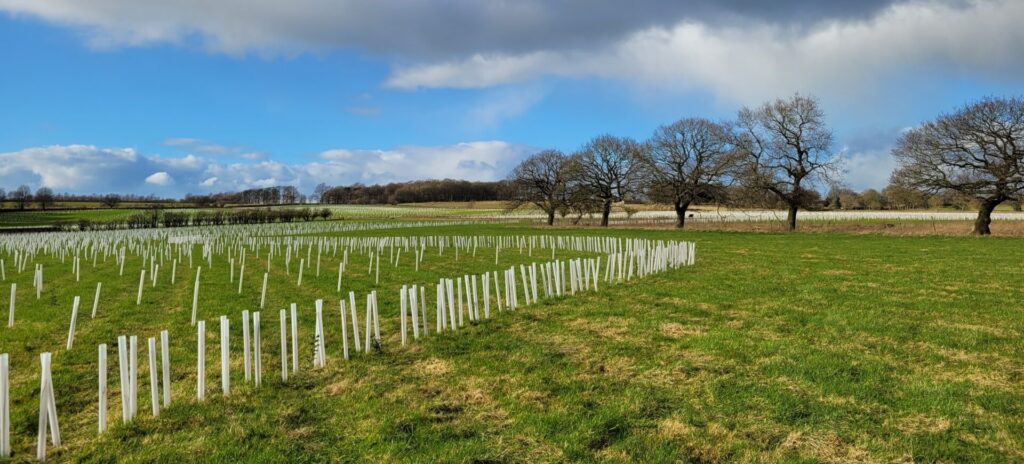Exploring Biogenic Emissions and Air Quality Impacts from Climate-Resilient UK Woodlands: Insights from Gair Wood
In June 2019, the UK Government passed legislation that commits the nation to reach net-zero greenhouse gas emissions by the year 2050. As part of a strategy to achieve this, the UK’s Climate Change Committee have recommended planting 30,000 – 50,000 hectares (1 hectare is approximately the size of an international rugby pitch) of new woodland per year to sequester carbon (Climate Change Committee, 2020).
As well as taking up carbon, trees invest a huge amount of energy in the synthesis and emission of biogenic volatile organic compounds (BVOCs; such as isoprene and monoterpenes) from their leaves. The mixture of BVOCs emitted by a tree varies between species but is also sensitive to environmental conditions such as temperature, carbon dioxide concentration, soil moisture and potentially to the species of tree that surround it.
Once emitted, BVOCs take part in complex atmospheric chemistry which, under certain conditions, can lead to the formation of ozone (O3) and particulate matter (PM). To explore the impact of BVOCs on the atmosphere and ultimately on air quality, land-surface models are used to generate emissions estimates (e.g., the MEGAN algorithm in the Community Land Model; Guenther et al., (2012)) and chemical transport models used to simulate their fate in the atmosphere (e.g., Scott et al., 2018). In general, the emissions estimates underpinning the behaviour of forests in these models are based on a limited number of tree species, drawn from a small number of studies. In particular, BVOC emissions from tree species that are now being preferentially planted in the UK due to their potential climate resilience (such as hornbeam) are poorly characterised due to a lack of direct measurements. To maximise resilience to climate change, and support biodiversity, new woodlands are being planted using diverse species mixtures but the impact this has on BVOC emissions from the trees is currently unclear (Sanaei et al., 2023).
In 2023, the University of Leeds planted over 60,000 trees at Gair Wood in north Leeds. Using Gair Wood as a living laboratory, alongside other sites and laboratory measurements in the HIRAC chamber, you will explore the sensitivity of BVOC emissions from trees of different ages to their environmental conditions. You will use this information to improve the characterisation of BVOC emissions from UK tree species in land surface models and ultimately our understanding of their impact on air quality.
Skills, Training & Research Groups:
Candidates for this project should have a background in environmental science, chemistry, physics, mathematics, physical geography, or natural sciences. You will join the Biosphere – Atmosphere Group (BAG) within the Institute for Climate and Atmospheric Science and the HIRAC Group in the School of Chemistry. You will become a member of the cross-faculty Leeds Ecosystem, Atmosphere and Forest (LEAF) Centre giving you the opportunity to exchange knowledge with colleagues from across the University of Leeds. You will benefit from the training in both specific technical and in transferable skills provided by the YES-DTN and those offered by the University of Leeds.
Further Reading:
Climate Change Committee, ‘Land use: Policies for a Net-Zero UK’, available here: https://www.theccc.org.uk/publication/land-use-policies-for-a-net-zero-uk/ (2020).
Guenther, A. B. et al., ‘The Model of Emissions of Gases and Aerosols from Nature version 2.1 (MEGAN2.1): an extended and updated framework for modeling biogenic emissions’, Geosci Model Dev, 5, 1471–1492 (2012).
Sanaei, A. et al., ‘Changes in biodiversity impact atmospheric chemistry and climate through plant volatiles and particles’, Communications Earth & Environment, 4:445 (2023).
Scott, C. E. et al., ‘Impact on short-lived climate forcers increases projected warming due to deforestation’, Nat. Commun, 9, 157 (2018).

